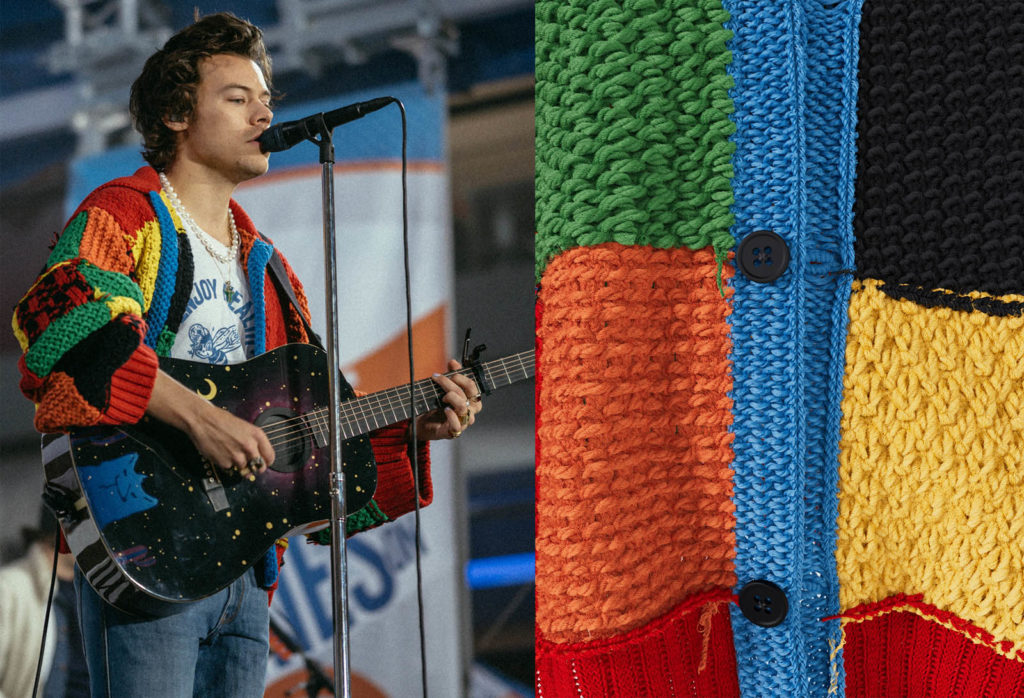
When is a material a textile? When is a textile a fabric? The unprecedented scope of new materials in development—by academia, government-funded technology groups, and start-ups—is challenging traditional concepts of fabric formation. How this will impact the larger industry is a useful question to consider.
E-textiles are progressing from “devices” mounted on a fabric structure, to semiconductors that are fully integrated into fibers. Sustainability is driving a wave of bio-based “grown” textiles, advances in paper-like nonwovens that biodegrade, and wearable films and synthetic skins. Inventive software is helping to create 3D-printed textiles, new architectural materials and digital textiles for the metaverse.
All fabrics are textiles, but it may be said that not all textiles are fabrics. Some of these materials will not be viable, much less have broad commercial appeal. Some, however, have the potential to change the textile industry as we know it.
A platform for innovation
“A lot of the excitement in textiles is transitioning to high-tech products,” says Michael Rein, senior technical program manager at Advanced Functional Fabrics of America (AFFOA). “For the textile industry to be viable in the U.S., all stakeholders should consider innovation.”
An early breakthrough at AFFOA was the embedding of semi-conductor devices into fibers, which could then be made into wearable, washable e-textiles; it continues to lead the industry in the development of functional fabrics. “The definition of fabric is not changing so much as evolving to present more options,” Rein continues. “Fabrics are defined by the way we use them. It can be as simple as adding functionality or responsive technologies.”

Sustainability and change
Sustainability is the magic word in today’s textile sector, and bio-based textiles, grown from bacterial or plant feedstocks such as algae or mycelliium, are a hot topic in the push to replace fossil fuel synthetics. Interdisciplinary designer and Rhode Island School of Design assistant professor Charlotte McCurdy works with algae to create bio-based, carbon-negative, petrochemical-free plastic textiles.
“The technologies that climate change will push us to develop will incrementally transform the composition of the industry in terms of feedstock and aggregation, but climate change itself will be the most fundamentally disruptive part of the change we will see over the coming decades,” says McCurdy. “Novelty in materials has been predominantly supply-led. We are in an era of so many urgent challenges; we need more demand-led innovation.”
At Pennsylvania’s Bally Ribbon Mills, weaver of narrow textiles for industrial and medical markets, sustainably driven innovation is still in its infancy, according to Ted Fetterman, vice-president of sales and marketing. “Bally is 100 percent petroleum-based synthetics. Performance and specific properties are key,” Fetterman says. “We are about full-bore, industrial, self-development, in partnership with our customers. This stuff is just not on the radar.”
However, Fetterman says he is aware that the U.S. Department of Defense is looking into bio-based textiles. “While we are just starting to investigate bio-based materials, we must have performance,” he adds.
The ascent of nonwovens
The market for nonwovens is growing, driven by the demand for personal protection equipment (PPE), diapers and incontinence products, and insulation materials for electric vehicles. Polyester, polypropylene and superabsorbent polymers comprise the bulk of these disposable products, which are not usually biodegradable.
AFFOA’s Rein acknowledges a sustainability-driven demand for biodegradable PPE from various organizations, including the U.S. Department of Commerce, which is funding this effort through the National Institute of Standards. In the EU, personal care wet wipes and hygiene products that contain plastic are subject to strict labeling and disposal regulations.
Natural, cellulosic and biodegradable fibers such as Lenzing VEOCEL™, and polylactic acid (PLA) as used in Asahi Kasei Ecorise™ nonwovens, are beginning to disrupt the nonwovens industry. Wet-laid manufacturing of nonwovens on paper-making machinery using staple cellulosic fibers is increasingly utilized for biodegradable consumer products such as wipes.
Air-laid paper is a textile-like material, categorized as a nonwoven fabric, made from cellulose fluff pulp; it is bulky and highly absorbent.
Creating fabrics without fibers
Textile films are another approach to nonwovens. A cellulose film, grown from the bacteria xylinum acetobacter by Brooklyn-based bio-designers Sum Studio, offers an alternative to traditional PPE.
Developed at the University of British Columbia, I-skins made from ionically conductive hydrogels with superior transparency, stretch and biocompatibility are assisting prosthetic wearers and robots by responding to touch, temperature and injury.
A sweat-absorbing film containing hygroscopic chemicals can be 3D printed into shoe insoles. Its inventors at National University of Singapore also created an energy-harvesting device to convert the moisture into energy to power devices.

3D printing still finding its way
The emergence of 3D printing, also known as additive manufacturing, promised mass individualization of apparel, footwear, and medical devices; but the rigidity of the available polymers results in textiles that are more sculptural than fluid.
A new process jointly developed by chemical company Covestro AG and 3D printer material supplier Polymaker incorporates flexible TPU materials, new software and specialized printers, reportedly resulting in wearable fabric.
“3D printing is a cheaper way to create prototypes and replace materials when you don’t need the structure of a fabric,” says Fetterman. “It’s a composite material, not a textile.”
Rein agrees, “3D printing is a technique, but not so much for fabrics. It’s more structural. Textiles are more complex, this is why we use them. But it doesn’t mean 3D materials can’t get there—it’s another challenge.”
What we have in common
Art and architecture are frequently inspired and informed by textile materials. Architect Marc Fornes and THEVERYMANY Studio in New York have created a number of soaring installations from composite layers of perforated or ultra-thin powdered aluminum that mimic the behavior of fabric.
“There is a parallel between what we do and the world of textiles,” says Fornes. “The façade of a building is like fabric on the body. Our materials are laid in stripes, like old-school fibers and fabrics.”
Fornes goes on to explain that software computes the point at which the tension in the materials will become frozen or rigid, generating compression. “It is like the drape and form of fabric without anything underneath.”
Fornes points out that software computations also drive looms, knitting machines 3D printing, and the digital representations of textiles used in product development. “While the media and scale are different, computation is what we have in common,” he explains.

Redefining in the metaverse?
The digitalization of textiles for development, sampling and fit could redefine future textiles in the so-called metaverse—an immersive 3D virtual world, parallel to the physical world.
The metaverse is gaining traction with non-fungible tokens (NFTs), defined as unique cryptographic images representing real-world items like artwork or fashion that exist on a blockchain and cannot be replicated. One example is JW Anderson’s crocheted patchwork cardigan worn by pop star Harry Styles, auctioned last December on the NFT platform xydrobe for $7,500.
The hyper-realistic virtual version of the cardigan took visual effect artists 300 hours to create. Software that simulates and models fabric behavior with incredible realism is being utilized by a number of designers, according to Rein. “The software activates as many sensors as possible—but you still can’t feel,” he remarks.
Fetterman believes that textiles and fabrics will likely be redefined in the metaverse. “It can imitate real life, but the definition gets blurred,” he says. “We can’t live there, but we can transact business.”
“If anything, it [the metaverse] might make us more receptive to thinking about how we understand and use dress across all areas of our lives,” says fashion, art and culture writer Rosalind Jana in Wired. “In future we might end up wearing highly engineered textiles or unexpected silhouettes that would otherwise never have existed.”
Debra Cobb is a freelance writer with expertise in the textiles industry. She is based in North Carolina.
 TEXTILES.ORG
TEXTILES.ORG


